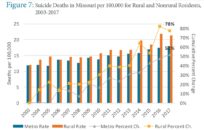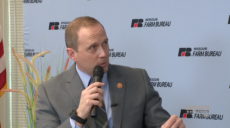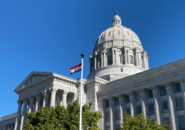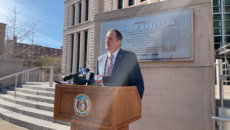The U.S. Department of Health and Senior Services (HHS) announced more than $1.8 billion in grant funding to aid communities battling the nationwide opioid epidemic.
And $18 million of that funding will go to Missouri, U.S. Sen. Roy Blunt said.
“The opioid epidemic continues to hurt people of all backgrounds in communities across our state,” Blunt, a Republican who pushed for the addition of the State Opioid Response grants in the FY 2019 Labor/HHS appropriations bill, said.
“This investment will provide key resources to expand access to prevention, treatment, and recovery services — especially in areas that need it the most,” Blunt said. “Making sure Missouri communities have the support they need to get this public health crisis under control will continue to be a top priority of mine.”
The Trump administration announced the grant funding Wednesday. The State Opioid Response grant program “provide[s] flexible funding to state governments to support prevention, treatment, and recovery services in the ways that meet the needs of their state,” HHS said in a news release.
In total, Missouri has received about $28 million through the State Opioid Response grant program this year, according to Blunt’s office. It has received more than $46 million in the past two years.
The Missouri Board of Pharmacy began accepting applications for a prescription drug take-back program Wednesday as well.
“We take our role in combating the opioid crisis very seriously,” said Kimberly Grinston, Missouri Board of Pharmacy executive director. “We’re looking forward to putting the RX Cares for Missouri Medication Destruction and Disposal Program into action and giving Missouri citizens a safe place to dispose of unwanted or unneeded medications.”
Nearly 1,000 people died from overdoses involving opioids in Missouri in 2017, according to the National Institute on Drug Abuse statistics. Missouri had a rate of 16.5 deaths per 100,000 people — higher than the national rate of 14.6 deaths.

Kaitlyn Schallhorn was the editor in chief of The Missouri Times from 2020-2022. She joined the newspaper in early 2019 after working as a reporter for Fox News in New York City.
Throughout her career, Kaitlyn has covered political campaigns across the U.S., including the 2016 presidential election, and humanitarian aid efforts in Africa and the Middle East.
She is a native of Missouri who studied journalism at Winthrop University in South Carolina. She is also an alumna of the National Journalism Center in Washington, D.C.
Contact Kaitlyn at kaitlyn@themissouritimes.com.




















